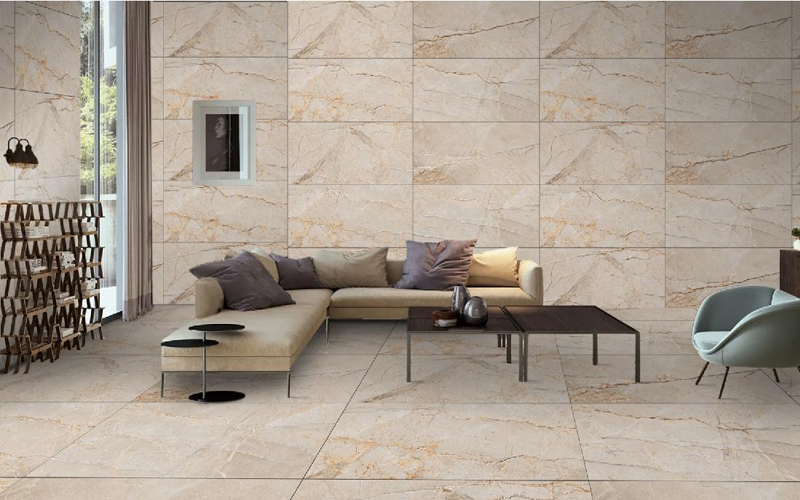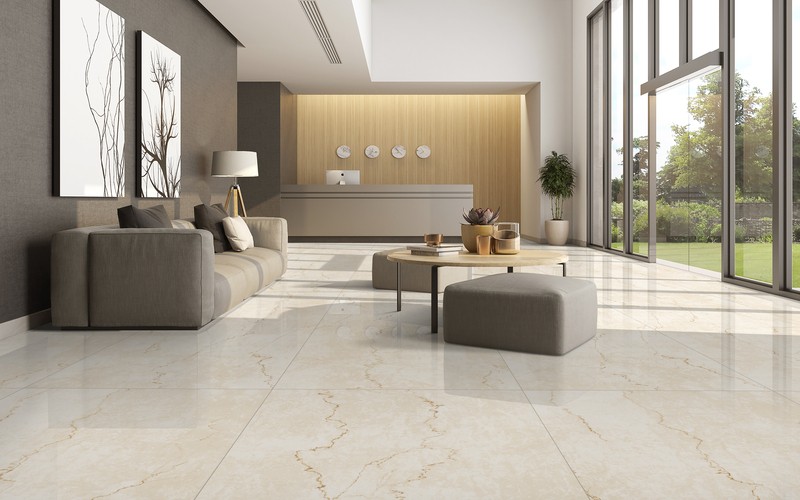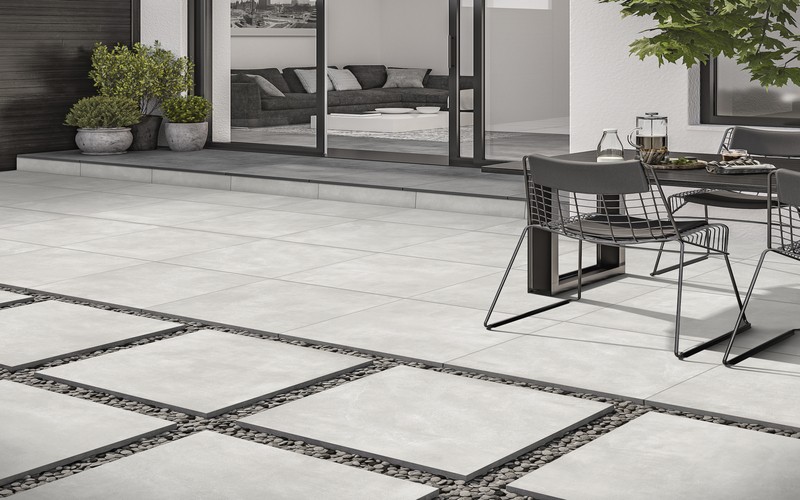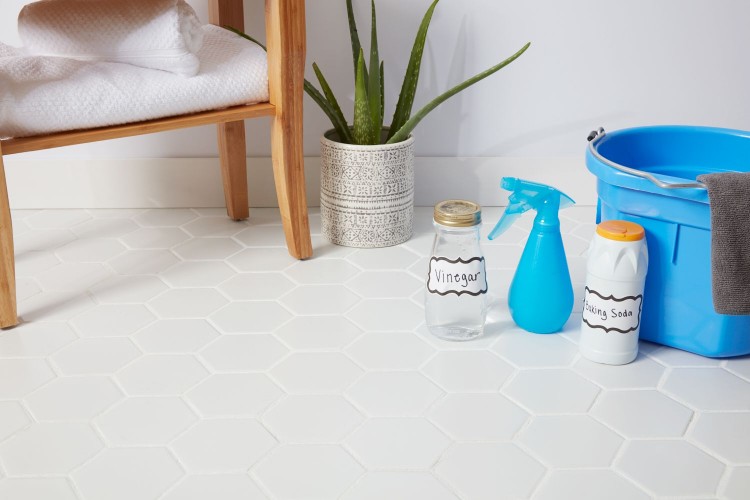Is porcelain tile heat resistant?
- News
- 09 Oct 2023

Porcelain tile has become a popular choice for flooring, countertops, backsplashes, and various other applications in homes and commercial spaces. One of the questions frequently asked by homeowners and designers is, "Is porcelain tile heat resistant?" In this comprehensive guide, we will explore the characteristics of porcelain tiles, their resistance to heat, and how they can be effectively used in areas exposed to high temperatures.
Understanding Porcelain Tile
Before we delve into the topic of heat resistance, it's essential to understand the nature of porcelain tile. Porcelain tiles are a type of ceramic tile known for their exceptional durability, versatility, and aesthetic appeal. They are created from a unique blend of clay and minerals, which are compressed at high pressures and fired at extremely high temperatures.
Porcelain tiles are distinct from standard ceramic tiles due to their dense and vitrified composition. This results in several notable qualities:
1. Low Water Absorption:
- Porcelain tiles have very low water absorption rates, typically less than 0.5%. This makes them highly resistant to moisture and ideal for areas like bathrooms, kitchens, and outdoor spaces.
2. Hardness and Durability:
- Porcelain tiles are exceptionally hard and durable, making them suitable for high-traffic areas. They are resistant to scratches, stains, and wear, maintaining their appearance over time.
3. Variety of Styles:
- Porcelain tiles come in an extensive range of colors, sizes, textures, and patterns. This versatility allows for creative design possibilities to suit various decor styles.
4. Heat Resistance:
- Porcelain tiles exhibit heat resistance to a certain extent, but the degree of resistance depends on several factors, including the specific type of porcelain and its thickness.
Heat Resistance of Porcelain Tiles
Porcelain tiles possess inherent heat resistance qualities due to their manufacturing process and composition. However, it's crucial to recognize that not all porcelain tiles are created equal, and their heat resistance can vary. Several factors influence the ability of porcelain tiles to withstand high temperatures:
1. Tile Thickness:
- Thicker porcelain tiles tend to have better heat resistance than thinner tiles. Thicker tiles can absorb and distribute heat more effectively, reducing the risk of cracking or damage.
2. Type of Porcelain:
- There are two primary types of porcelain tiles: through-body porcelain and glazed porcelain. Through-body porcelain, where the color and pattern run throughout the tile, tends to be more heat-resistant than glazed porcelain, which has a decorative glaze layer.
3. Manufacturing Quality:
- The quality of the manufacturing process and the materials used can impact heat resistance. High-quality porcelain tiles are more likely to exhibit superior heat resistance.
4. Tile Finish:
- Polished porcelain tiles may be more vulnerable to heat than matte or textured tiles. The shiny surface of polished tiles can show heat-related stress more prominently.
5. Tile Installation:
- Proper tile installation is critical to ensuring heat resistance. Adequate substrate preparation, appropriate adhesive, and the use of expansion joints can all contribute to the tile's ability to withstand heat.
6. Heat Source:
- The type of heat source and its temperature can also influence the performance of porcelain tiles. Different sources of heat, such as stovetops, fireplaces, or radiant heating systems, may pose varying levels of risk to tiles.
7. Localized vs. Even Heating:
- Evenly distributed heat across a tile surface is less likely to cause issues than localized or concentrated heat. For example, placing a hot pot or pan directly on a small area of the tile may pose a greater risk than even exposure to radiant floor heating.
Practical Applications of Porcelain Tiles in Heat-Exposed Areas
Porcelain tiles are known for their versatility and can be effectively used in areas exposed to heat, with some considerations:
1. Kitchen Countertops:
- Porcelain tiles can make an excellent choice for kitchen countertops, including areas near stovetops. However, it's advisable to use trivets or hot pads to place hot cookware on the surface to minimize direct heat exposure.
2. Fireplaces:
- Porcelain tiles can be used to surround fireplaces, providing a stylish and fire-resistant surface. Ensure that the tiles used are rated for fireplace use and can withstand the heat generated by the fire.
3. Outdoor Spaces:
- Porcelain pavers or tiles are a popular choice for outdoor patios, pool decks, and walkways. They are not only resistant to heat but also to freezing temperatures, making them suitable for all seasons.
4. Radiant Floor Heating:
- Porcelain tiles are often used in conjunction with radiant floor heating systems. When properly installed and with the right thickness and type of porcelain, they can efficiently transmit and distribute heat.
5. Backsplashes:
- Porcelain tiles are commonly used as backsplashes in kitchens and bathrooms. While they are heat-resistant, it's a good practice to avoid direct exposure to open flames or extremely high temperatures.
Tips for Maintaining Heat-Resistant Porcelain Tiles
Proper care and maintenance can extend the life and appearance of heat-resistant porcelain tiles:
1. Regular Cleaning:
- Keep the tiles clean by regularly sweeping or vacuuming to remove dirt and debris. Use a damp mop or cloth with a mild detergent for deeper cleaning.
2. Avoid Abrasive Cleaners:
- Avoid using abrasive cleaners or scouring pads, as they can scratch the surface of the tiles.
3. Use Trivets and Hot Pads:
- When placing hot cookware or utensils on porcelain countertops or surfaces, use trivets or hot pads to protect the tiles from direct heat contact.
4. Prompt Stain Removal:
- Address spills and stains promptly to prevent discoloration. Porcelain tiles are stain-resistant, but some substances can still cause staining if left unattended.
5. Periodic Sealing (if applicable):
- Some porcelain tiles, particularly those with a glaze, may benefit from periodic sealing. Consult the manufacturer's recommendations for your specific tiles.
6. Regular Inspections:
- Periodically inspect the tiles for any signs of damage, cracks, or wear. Address any issues promptly to prevent further damage.
In Conclusion
Porcelain tiles offer excellent heat resistance when chosen and installed appropriately. Their durability, low water absorption, and versatility make them suitable for a wide range of applications, including areas exposed to heat. By selecting the right type of porcelain, maintaining the tiles properly, and taking precautions in heat-exposed areas, you can enjoy the beauty and functionality of porcelain tiles for many years to come.
- porcelain tile
- heat resistance
- heat-resistant tiles
- tile durability
- porcelain tile applications














